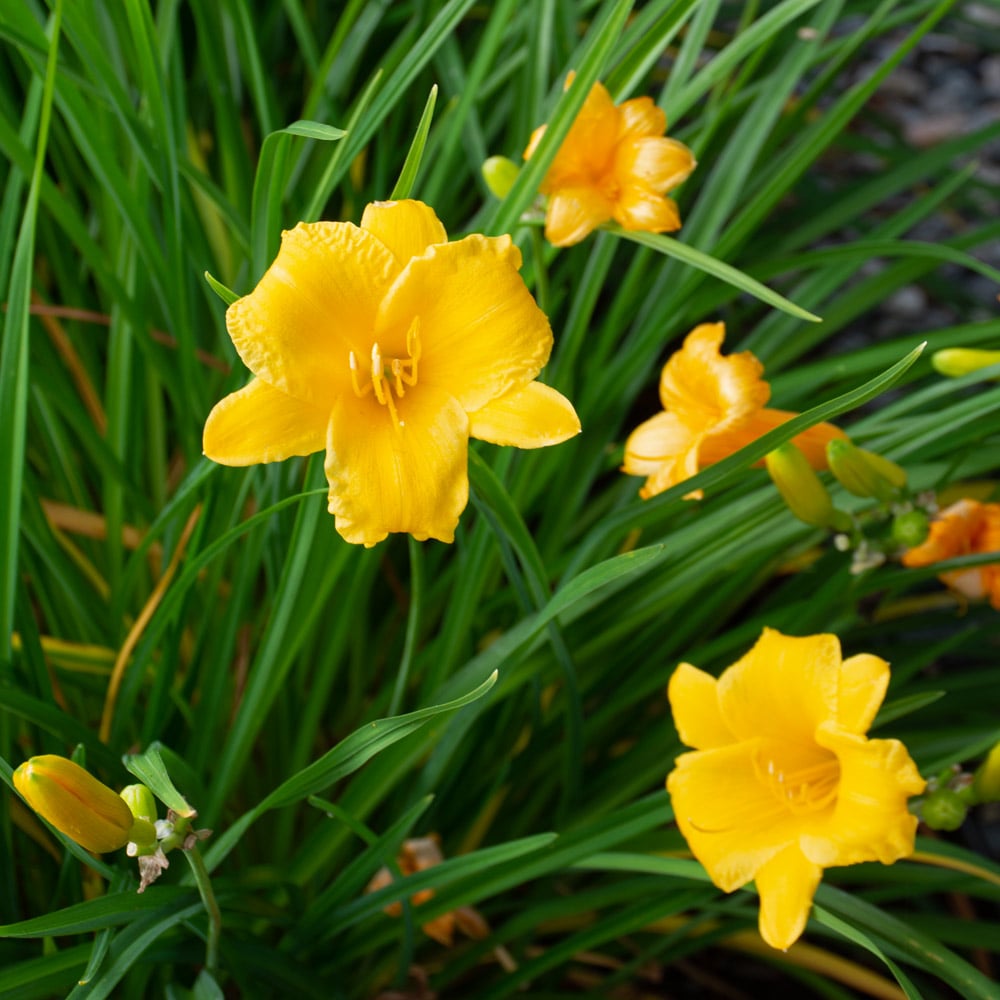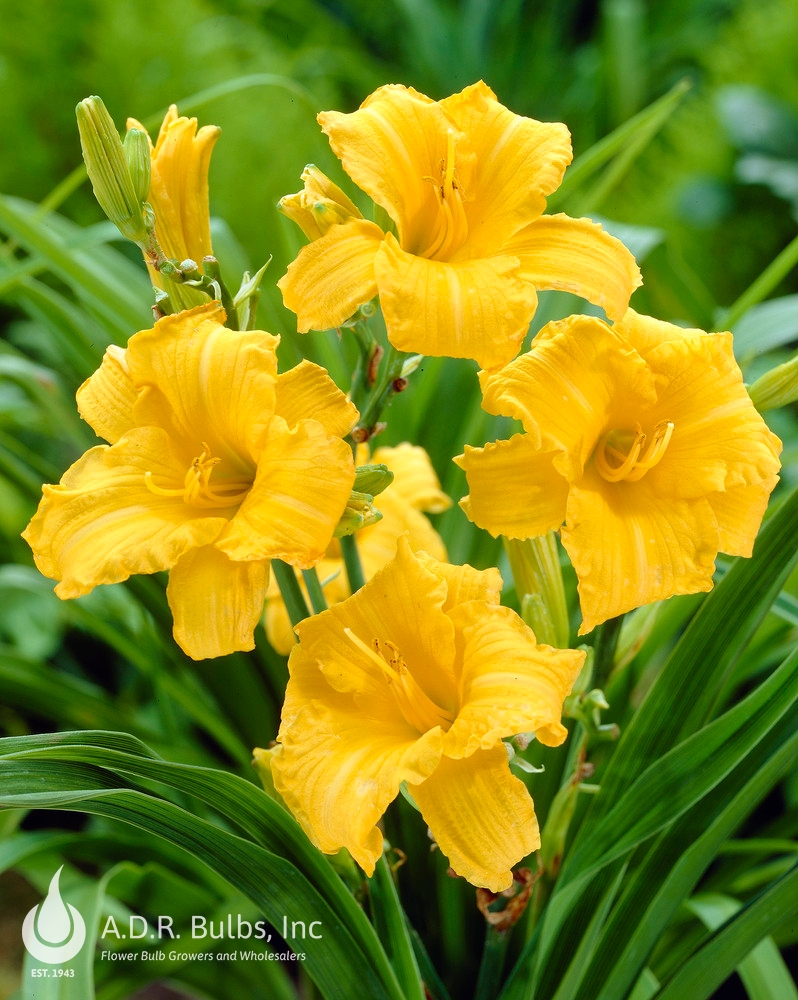The Enduring Charm of Hemerocallis ‘Stella de Oro’: A Golden Star in the Garden
Hemerocallis ‘Stella de Oro’, the diminutive daylily that has captured the hearts of gardeners worldwide, stands as a testament to the enduring power of simplicity and reliability. This unassuming perennial, with its cheerful golden blossoms, has become a staple in landscapes, renowned for its prolific blooming, adaptability, and low-maintenance nature. This detailed exploration delves into the multifaceted appeal of ‘Stella de Oro’, examining its history, characteristics, cultivation, and the reasons behind its widespread popularity.
A Pedigree of Proven Performance
The journey of ‘Stella de Oro’ began in the mid-20th century, a product of the visionary breeding work of Dr. Paul B. Lewis. Released in 1975, it quickly distinguished itself from other daylilies of the time. Its compact size, extended blooming period, and vibrant color were novelties that resonated with gardeners seeking both beauty and practicality. Dr. Lewis’s dedication to creating a daylily that thrived in various conditions laid the foundation for ‘Stella de Oro’s’ remarkable success.

Defining Characteristics: A Symphony of Gold
‘Stella de Oro’ is instantly recognizable by its distinctive features.
Compact and Versatile Size
Unlike many daylilies that boast towering scapes, ‘Stella de Oro’ maintains a modest height of 10-12 inches (25-30 cm). This compact stature makes it ideal for edging pathways, filling in borders, and creating vibrant focal points in smaller gardens. Its neat, mounding habit also lends itself well to container gardening, bringing a touch of sunshine to patios and balconies.

Abundant and Extended Bloom
Perhaps the most celebrated characteristic of ‘Stella de Oro’ is its incredibly long blooming period. While individual flowers last only a single day (hence the name “daylily”), the plant produces a continuous succession of blossoms from late spring or early summer through to late summer or early fall. This extended flowering period ensures a consistent display of color, making it a valuable asset in any garden design.
Vibrant Golden Hue
The flowers of ‘Stella de Oro’ are a rich, warm golden-yellow, a color that radiates cheerfulness and complements a wide range of other plants. The blooms are typically 2.5-3 inches (6-7.5 cm) in diameter, featuring slightly ruffled petals and a prominent yellow throat. This golden hue remains vibrant and unfaded, even in intense sunlight.

Adaptability and Low Maintenance
‘Stella de Oro’ is renowned for its resilience and adaptability. It thrives in a wide range of climates and soil conditions, tolerating both heat and drought once established. Its low-maintenance nature makes it a favorite among both novice and experienced gardeners.
Cultivating ‘Stella de Oro’: A Guide to Success
Cultivating ‘Stella de Oro’ is a rewarding experience, as its forgiving nature allows for a relatively hands-off approach. However, providing optimal growing conditions will ensure a profusion of blooms and a healthy, vigorous plant.
Sunlight and Soil
‘Stella de Oro’ prefers full sun to partial shade. While it can tolerate some shade, it will bloom most prolifically in a sunny location. The plant adapts to a variety of soil types, but it thrives in well-drained soil that is rich in organic matter. Amending the soil with compost or well-rotted manure before planting will improve drainage and fertility.
Planting and Spacing
Daylilies are typically planted in spring or fall. When planting ‘Stella de Oro’, dig a hole slightly larger than the root ball and position the plant so that the crown is just below the soil surface. Space plants about 12-18 inches (30-45 cm) apart to allow for adequate air circulation and growth.
Watering and Fertilizing
Once established, ‘Stella de Oro’ is relatively drought-tolerant. However, regular watering during dry spells will promote healthy growth and blooming. A balanced fertilizer applied in early spring and again after the first flush of blooms will provide the necessary nutrients for sustained flowering.
Deadheading and Division
Deadheading, or removing spent flowers, will encourage the plant to produce more blooms. While not strictly necessary, it will keep the plant looking tidy and extend the flowering period. After several years, ‘Stella de Oro’ may become overcrowded and less productive. Dividing the clumps every 3-5 years will rejuvenate the plant and promote healthy growth. This is best done in early spring or late fall.
Pest and Disease Resistance
‘Stella de Oro’ is generally resistant to pests and diseases. However, it can occasionally be affected by aphids, slugs, or spider mites. These pests can be controlled with insecticidal soap or other appropriate treatments. Daylily rust is a fungal disease that can affect daylilies, but ‘Stella de Oro’ is considered relatively resistant.
The Versatility of ‘Stella de Oro’ in Landscape Design
The compact size, vibrant color, and extended blooming period of ‘Stella de Oro’ make it a versatile addition to any garden design.
Edging and Borders
Its neat, mounding habit makes it perfect for edging pathways and creating defined borders. Its bright golden blooms add a cheerful touch to any garden space.
Mass Plantings and Ground Cover
‘Stella de Oro’ can be planted in mass to create a stunning carpet of golden blooms. Its ability to spread and form dense clumps makes it an effective ground cover.
Container Gardening
Its compact size and adaptability make it ideal for container gardening. It can be used to add a splash of color to patios, balconies, and decks.
Companion Planting
‘Stella de Oro’ pairs well with a variety of other plants, including:
Salvia: The contrasting colors and textures of salvia create a visually appealing combination.
The Enduring Popularity of ‘Stella de Oro’
The enduring popularity of ‘Stella de Oro’ can be attributed to its numerous desirable qualities.
Reliability and Low Maintenance
Its reliability and low-maintenance nature make it a favorite among gardeners of all skill levels. It thrives in a wide range of conditions and requires minimal care.
Extended Blooming Period
Its extended blooming period ensures a continuous display of color, making it a valuable asset in any garden design.
Versatility and Adaptability
Its compact size, vibrant color, and adaptability make it a versatile addition to any landscape.
Affordability and Availability
‘Stella de Oro’ is widely available and relatively inexpensive, making it an accessible option for gardeners on a budget.
Conclusion: A Golden Legacy
Hemerocallis ‘Stella de Oro’ has earned its place as a garden classic. Its enduring popularity is a testament to its reliability, beauty, and adaptability. This golden star continues to shine brightly in gardens around the world, bringing joy and color to all who behold it. Its legacy as a low maintenance, high impact, and visually appealing plant is well deserved, and will continue for years to come.

